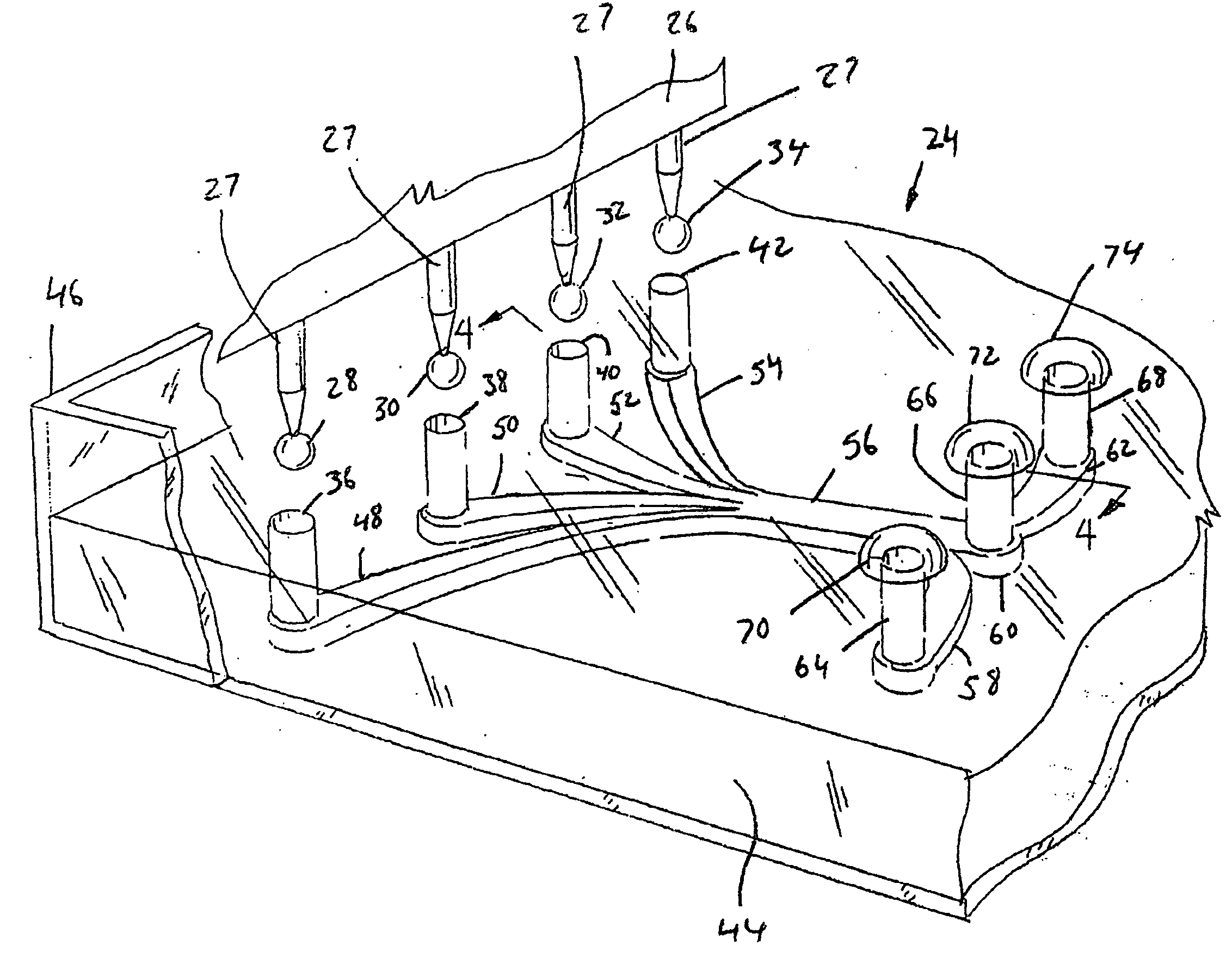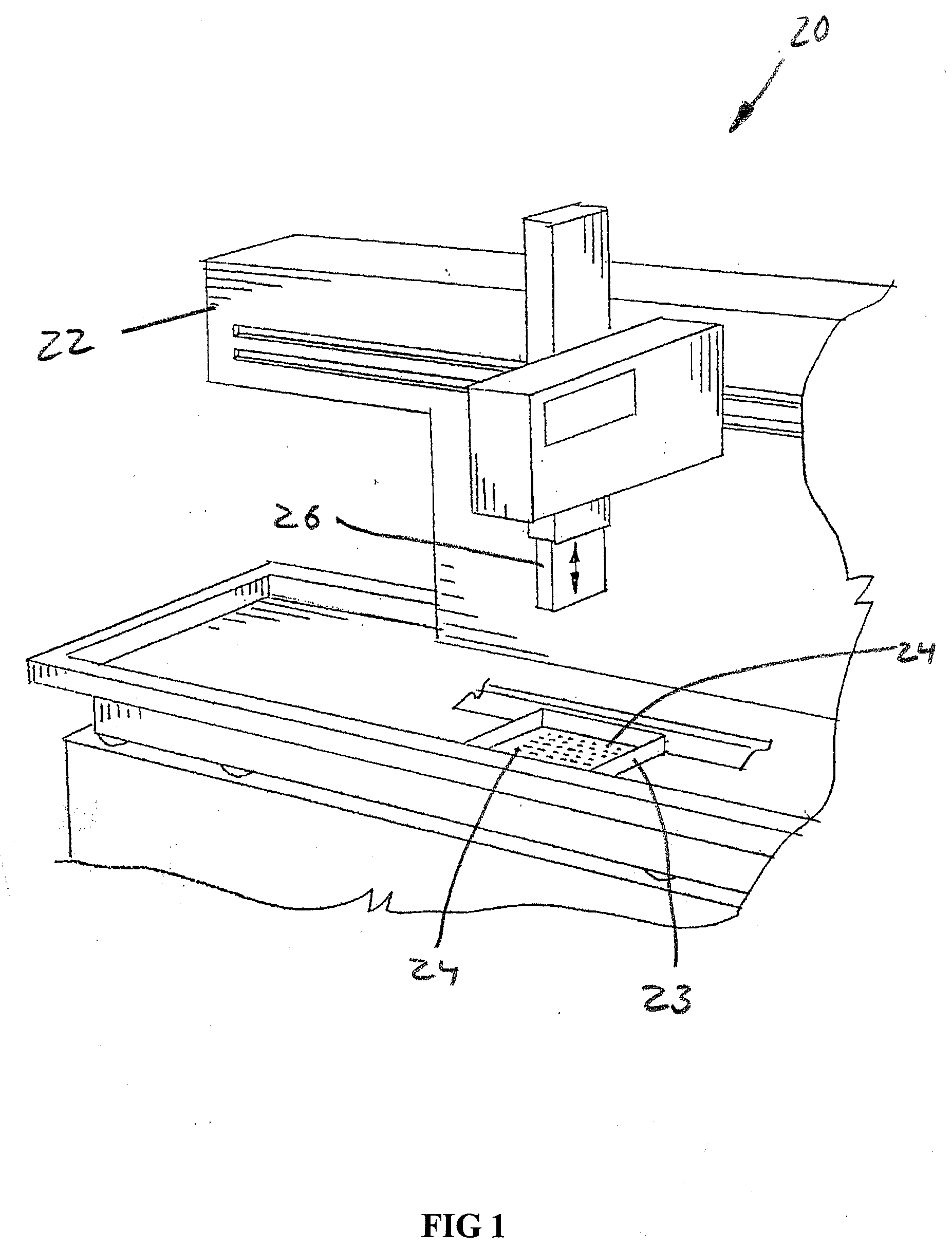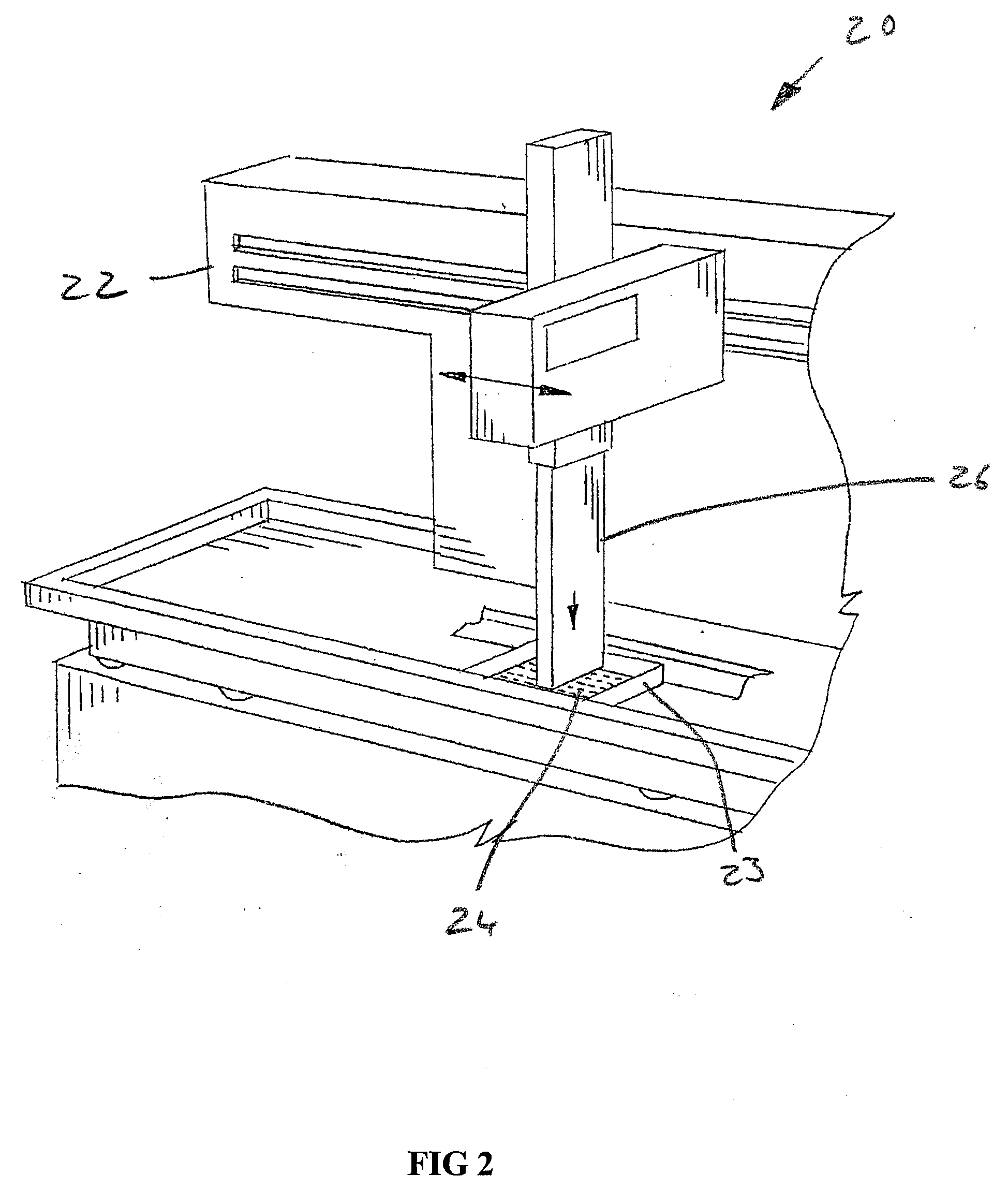Gelation controlled fluid flow in a microscale device
a microfluidic device and gelation control technology, applied in the field of microfluidic devices, can solve the problems of high reagent consumption, unsustainable, and many drugs failing clinical trials, and achieve the effects of low reagent consumption, improved tissue layer approximation, and high throughput screening application
- Summary
- Abstract
- Description
- Claims
- Application Information
AI Technical Summary
Benefits of technology
Problems solved by technology
Method used
Image
Examples
Embodiment Construction
[0057]Referring now to the drawings, and more particularly to FIGS. 1 and 2, there is shown an automated high throughput screening system 20 which generally includes a multichannel pipettor 22, and a multiconduit array (MCA) 23 of mircrofluidic devices 24 according to the present invention, with the multichannel pipettor 22 in an up position. Multichannel pipettor 22 can be as manufactured by Beckman Coulter, or be one of many other multichannel pipettors. FIG. 2 illustrates the head 26 of multichannel pipettor 22 in a down position where individual pipettes 27 can deposit input droplets 28, 30, 32 and 34 (FIG. 3) into corresponding channel inlets 36, 38, 40 and 42 of one of the microfluidic devices 24 of multiconduit array 23.
[0058]More particularly, MCA 23 according to the present invention can be fabricated as a thin layer 44 of polydimethylsilane, a biologically inert elastomeric polymer, and with a tray 46 of clear plastic (polystyrene), or other materials. In one embodiment, a...
PUM
 Login to View More
Login to View More Abstract
Description
Claims
Application Information
 Login to View More
Login to View More - R&D
- Intellectual Property
- Life Sciences
- Materials
- Tech Scout
- Unparalleled Data Quality
- Higher Quality Content
- 60% Fewer Hallucinations
Browse by: Latest US Patents, China's latest patents, Technical Efficacy Thesaurus, Application Domain, Technology Topic, Popular Technical Reports.
© 2025 PatSnap. All rights reserved.Legal|Privacy policy|Modern Slavery Act Transparency Statement|Sitemap|About US| Contact US: help@patsnap.com



